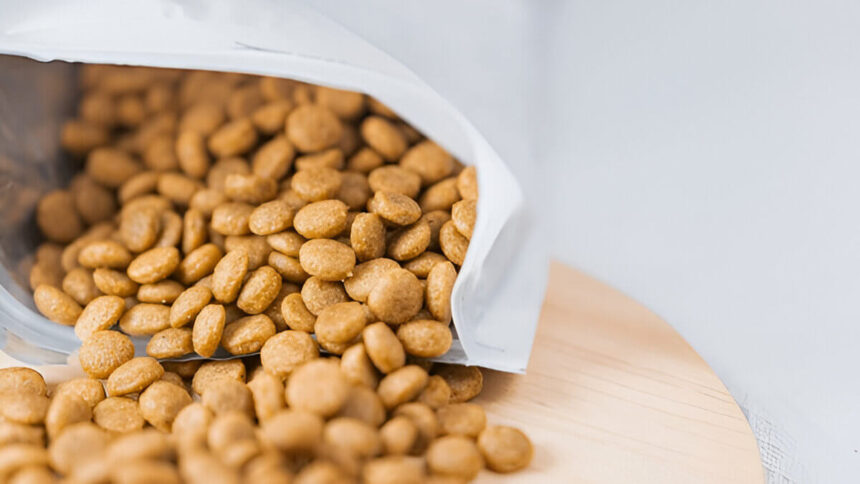I’m going to dive into the world of cat food to answer a common question: Which cat food has the smallest kibble?
As a conscious cat owner, I’ve always been on the lookout for the smallest kibble cat food options. After all, our feline friends can be quite picky when it comes to their meals.
Kibble size is more important to your cat than you might think, as it can affect your cat’s overall eating experience, dental health, and digestion.
In this article, I will share my personal insights and experiences on finding the best kibble cat food.
For this, I scoured various markets, read labels, and even consulted with fellow cat enthusiasts to create a list of the top contenders.
So, if you’re as curious as I am about Which cat food has the smallest kibble, read on to discover the ideal options for your discerning feline companion.
Why Does Kibble Size Matter?
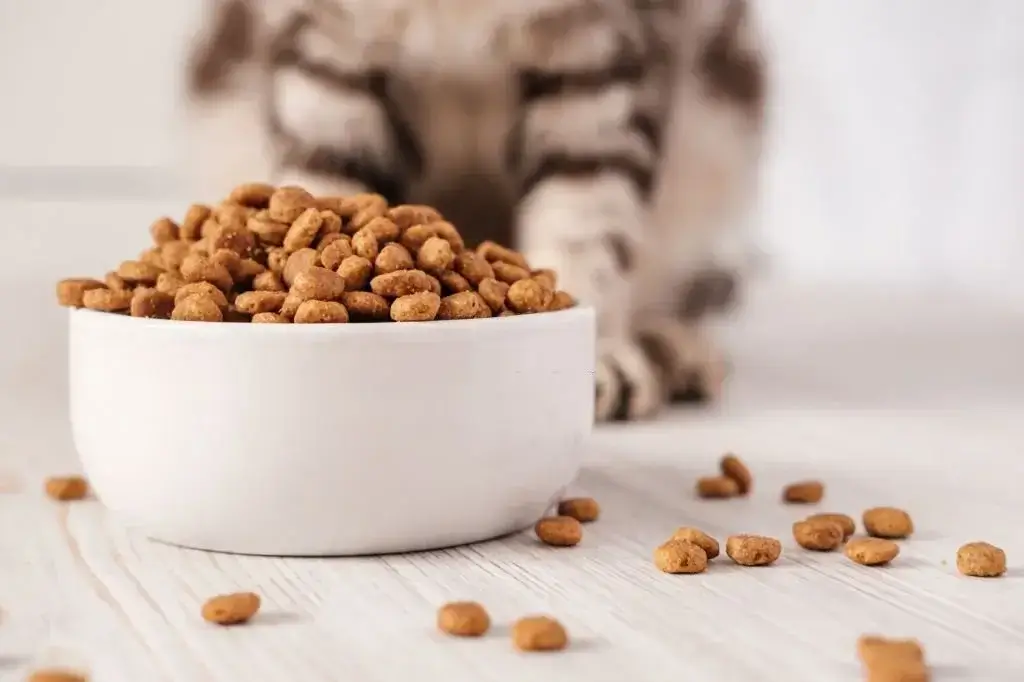
You might wonder, “Why all the fuss about kibble size?” It’s not just about being picky; kibble size plays a crucial role in your cat’s overall eating experience, dental health, and digestion.
Easier Chewing
For starters, smaller kibbles are easier for cats to chew, especially for kittens and senior cats with dental issues. These little bites are perfect for their tiny teeth and make mealtime a breeze.
Enhanced Flavor Release
Ever noticed how your cat seems more excited about some foods than others? Smaller kibbles have a larger surface area relative to their volume, which means more flavor gets released with each bite. Your cat gets an explosion of taste with every nibble.
Portion Control
Smaller kibbles make it easier to measure precise portions, helping you keep your kitty at a healthy weight. Overfeeding can lead to obesity, which is a common issue for indoor cats.
Which cat food has the smallest kibble?
Discovering the tiniest dry cat food that suits your furry companion can be quite an adventure.
After extensive research and testing, I’ve discovered that Royal Canin Indoor Adult Dry Cat Food offers the smallest kibble size on the market. It’s like cat-sized popcorn!
This specialized cat food is tailored for indoor cats, and the tiny kibble size is perfect for those dainty feline mouths. It’s so small, it’s like they’re playing a game of “find the kibble” every mealtime.
But here’s the catch – while your cat will love the petite size, you might find yourself wondering if you’re feeding a family of ants. Just kidding! It’s actually a great choice for portion control and dental health.
If you’re scratching your head, wondering which cat food boasts the most petite kibble for your young whiskered explorer, then consider these top contenders: CRAVE High Protein Cat Food, Blue Buffalo Dry Cat Food, Royal Canin Indoor Adult Dry Cat Food, and Purina ONE Natural Dry Cat Food.
We have some special kibble-buying tips and considerations you should consider. Now keep reading the full article to know the details.
Why Do Cats Prefer Smaller Kibbles?
Cats are known for their discerning palates, and kibble size matters more to them than we might think. Smaller kibbles offer several advantages:
1. Easy to Chew: Tiny kibbles are more manageable for cats, especially for kittens and senior cats with dental issues. They require less effort to chew, making mealtime a breeze.
2. Enhanced Flavor Release: Smaller kibbles have a larger surface area, which allows for better flavor release. This means your cat gets an explosion of taste with every bite.
3. Portion Control: It’s easier to control portion sizes with small kibbles, helping to prevent overeating and maintain a healthy weight.
Now that we’ve covered the appeal of small kibbles, let’s dive into some top choices and explore why cats love them:
Top 4 Cat Food Has the Smallest Kibble
I’ve embarked on this quest, and I’m here to introduce you to the Best 4 fantastic contenders: CRAVE High Protein Cat Food, Blue Buffalo Dry Cat Food, Royal Canin Indoor Adult Dry Cat Food, and Purina ONE Natural Dry Cat Food.
Not only do these options boast some of the smallest kibble sizes around, but they also offer a host of benefits that your cat will adore.
1. CRAVE High Protein Cat Food
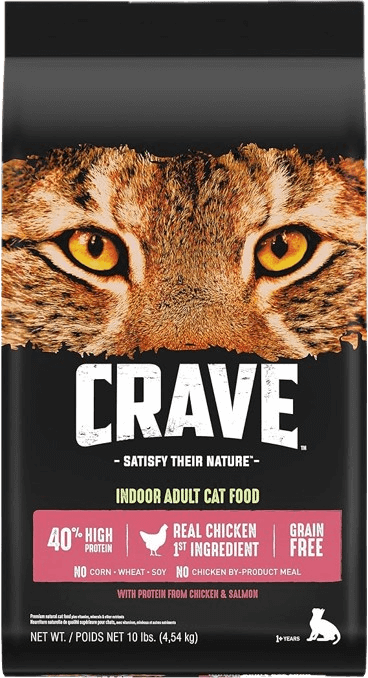
CRAVE’s kibble size is perfect for cats of all sizes, making it easy for your furball to munch away.
Cats are obligate carnivores, which means they thrive on a diet rich in animal protein. CRAVE High Protein Cat Food caters to this need impeccably.
Packed with high-quality animal protein sources like chicken, salmon, and turkey, it satisfies your kitty’s carnivorous cravings.
The small kibble size makes it easy for your feline friend to nibble and enjoy every bite.
Why Cats Love It:
Cats are obligate carnivores, and CRAVE knows it. Their High Protein Cat Food boasts real meat as the first ingredient, satisfying your cat’s ancestral cravings. The high protein content helps support lean muscles and energy levels, ensuring your kitty remains playful and spry.
Health Benefits:
With no grains, artificial flavors, or preservatives, CRAVE High Protein Cat Food promotes overall health and digestion. Plus, it’s crafted with essential nutrients like vitamins, minerals, and taurine, ensuring your cat’s well-being.
2. Blue Buffalo Dry Cat Food
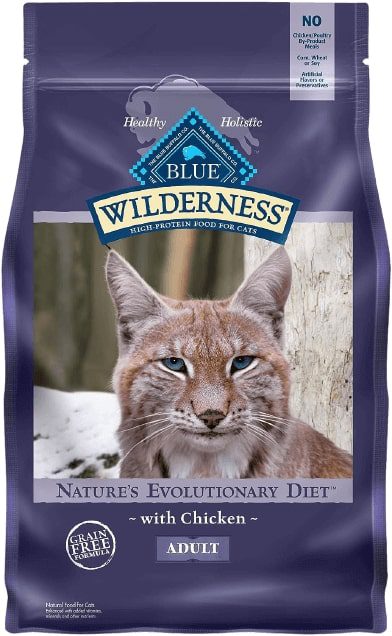
Blue Buffalo’s kibbles are not just small; they are perfectly bite-sized for your feline’s delight.
Blue Buffalo is a brand known for its commitment to natural ingredients. Their dry cat food is no exception. It contains real meat as the first ingredient, which cats find irresistible.
The small kibble size makes it a breeze for cats of all ages to manage, from playful kittens to sophisticated seniors.
Why Cats Love It:
Cats can’t resist the rich flavors and real meat found in Blue Buffalo Dry Cat Food. Whether it’s chicken, salmon, or turkey, the variety keeps mealtime exciting.
Additionally, it’s enriched with its exclusive Life Source Bits, which are a precise blend of antioxidants, vitamins, and minerals to support a robust immune system.
Health Benefits:
Blue Buffalo emphasizes natural ingredients and avoids artificial additives, promoting optimal health and digestion. Omega-3 and -6 fatty acids contribute to a sleek coat and healthy skin.
3. Royal Canin Indoor Adult Dry Cat Food
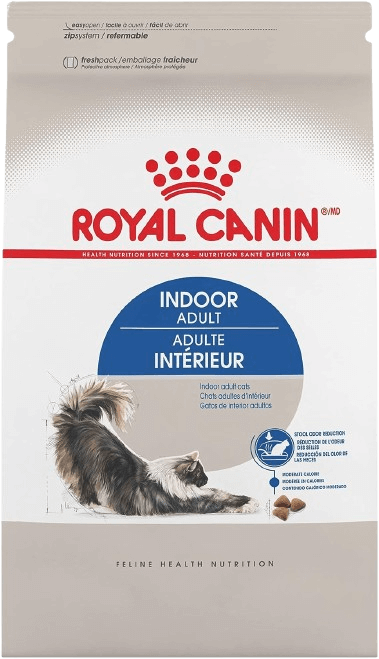
Cats can be quite finicky, and the size of their kibble matters. Royal Canin understands this, and that’s why they’ve crafted a kibble size that’s just right for indoor cats. It’s small enough for those delicate feline mouths, making mealtime a breeze.
The kibble size of Royal Canin Indoor Adult Dry Cat Food is tailored specifically for indoor cats, making it easy for them to nibble away comfortably.
Why Cats Love It:
Cats appreciate the delectable taste and texture of this cat food. It’s formulated to suit the preferences of indoor cats, who tend to be less active than their outdoor counterparts.
The recipe features a balance of proteins, fibers, and essential nutrients to support a more sedentary lifestyle.
Health Benefits:
Royal Canin’s expertise in feline nutrition shines through in this cat food. It takes into account the unique needs of indoor cats, helping to control hairballs and manage weight.
Plus, it promotes dental health with its crunchy texture and contains antioxidants to support a strong immune system.
4. Purina ONE Natural Dry Cat Food
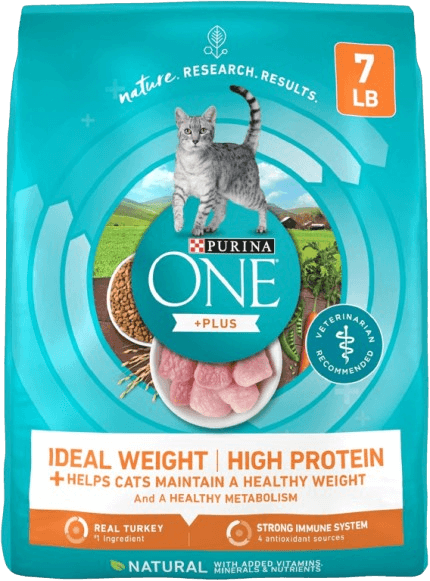
Purina ONE is a trusted name in pet nutrition. Their natural dry cat food not only has a small kibble size but also contains high-quality ingredients, including real poultry or fish.
Cats love the taste, and you’ll love knowing they’re getting the nutrition they need. Purina ONE Natural features small kibbles designed with your cat’s comfort in mind.
Why Cats Love It:
This cat food’s real meat content is hard for cats to resist, providing them with the protein they need to maintain strong muscles. It also includes a blend of antioxidants for a strong immune system.
Health Benefits:
Purina ONE Natural Dry Cat Food prioritizes high-quality ingredients and avoids artificial colors and preservatives. It’s designed to support urinary tract health and overall vitality.
Is It Safe To Feed Cats Very Small Kibbles?
Yes, it’s perfectly safe to feed cats very small kibbles! Think of them as bite-sized snacks for your feline buddy.
Small kibbles are like cat-sized nibbles, making it easier for your furball to munch away. No need to worry about them choking or struggling with these little bites.
In fact, some cats prefer tiny kibbles because they can savor each bite at their own pace. It’s like fine dining for your whiskered connoisseur.
Remember, while small kibbles are safe, always ensure they get a balanced diet with the right nutrients. So, let your cat enjoy those itty bitty bites of deliciousness!
How To Choose The Best Small Kibble Cat Food
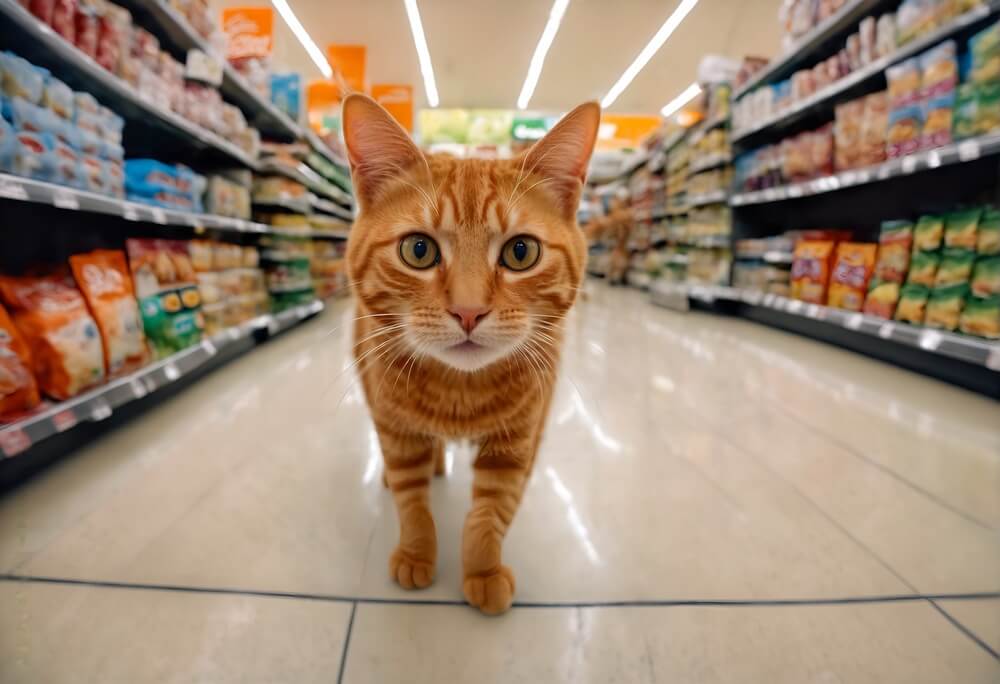
When it comes to choosing the best small kibble for your feline companion, care must be taken to ensure that they get the proper nutrition and enjoy their food. It is essential to consider several important factors to ensure this. Here’s how to choose the best cat kibble:
Cat’s Age and Health
Take into account your cat’s life stage and any specific health requirements. Kittens need kibble formulated for growth, while adult cats and seniors have different nutritional needs. Cats with medical conditions may require specialized diets.
Allergies and Sensitivities
If your cat has known allergies or food sensitivities, select kibble labeled as hypoallergenic or limited-ingredient. These formulas are designed to reduce the risk of allergic reactions.
Kibble Size
Small kibble sizes are ideal for cats as they are easier to chew and swallow. The kibble should be proportionate to your cat’s mouth size to prevent choking or discomfort.
Nutritional Balance
Ensure that the kibble provides a well-balanced diet. It should contain essential vitamins, minerals, and fatty acids, like Omega-3 and Omega-6, to support your cat’s overall health and coat condition.
Avoid Artificial Additives
Steer clear of kibbles that contain artificial colors, flavors, or preservatives. These additives offer little nutritional value and can potentially harm your cat’s health in the long run.
Consult Your Vet
It’s always a good idea to consult your veterinarian when choosing cat food. They can provide personalized recommendations based on your cat’s specific needs and health conditions.
Trial and Observation
When you’ve selected a kibble that meets your criteria, introduce it gradually into your cat’s diet. Observe how your cat responds to the new food. Look for signs of improved energy, coat quality, and overall well-being.
Finding the best small kibble for your cat might require patience and experimentation.
Pay attention to your cat’s preferences and health indicators to ensure they receive the nutrition they need to thrive.
How Is Dry Cat Food Made To Be Smaller?
To make dry cat food smaller, manufacturers use specialized machinery to shape and size the kibbles during the extrusion process.
The key steps involve mixing the ingredients into a dough-like consistency and then forcing the mixture through a machine with small openings.
These openings shape the kibble, which is then cut into the desired size before baking to achieve the final texture and size.
It’s a precise process, ensuring each kibble is uniformly small and suitable for your cat’s consumption.
Additional Tips for Feeding Your Cat
Now that we’ve covered the basics of choosing the best small kibble cat food, let’s delve into some extra tips to ensure your kitty’s mealtime is as enjoyable and nutritious as possible.
Mixing Wet and Dry Food
Many cat owners find that mixing wet and dry food can be beneficial. Wet food adds extra moisture to your cat’s diet, which is particularly important if they don’t drink enough water. Plus, the combination of textures can make meals more exciting for your cat.
Regular Feeding Schedule
Establishing a regular feeding schedule helps maintain your cat’s digestive health and keeps their metabolism steady. Try to feed your cat at the same times every day to create a routine they can rely on.
Monitoring Portion Sizes
Overfeeding can lead to obesity and related health problems. Use the feeding guidelines on the cat food packaging as a starting point, but adjust based on your cat’s activity level, age, and overall health. Your vet can also provide guidance on appropriate portion sizes.
Keeping Food Fresh
Store dry cat food in an airtight container to keep it fresh and prevent it from becoming stale. Wet food should be covered and refrigerated after opening, and any uneaten portions should be discarded after 24 hours.
Hydration is Key
Cats often don’t drink enough water, which can lead to urinary and kidney issues. Ensure your cat always has access to fresh water. Consider using a cat water fountain, as many cats prefer running water.
Regular Vet Check-ups
Routine vet visits are essential for monitoring your cat’s health. Your vet can help identify any nutritional deficiencies or health issues that might require a change in diet.
DIY Cat Treats with Small Kibble

If you enjoy a bit of DIY, why not try making some homemade cat treats using small kibble? Here’s a simple recipe to get you started:
Tuna and Kibble Treats
Ingredients:
- 1 can of tuna in water, drained
- 1 cup of small kibble cat food
- 1 egg
- 1 tablespoon of whole wheat flour
Instructions:
- Preheat your oven to 350°F (175°C).
- In a bowl, mash the tuna until smooth.
- Add the small kibble, egg, and flour, mixing until well combined.
- Form small balls or shapes and place them on a baking sheet lined with parchment paper.
- Bake for about 10-12 minutes or until the treats are firm.
- Let them cool completely before serving them to your cat.
These treats are a great way to incorporate the kibble your cat loves into a special snack.
Frequently Asked Questions
How do I know if my cat prefers small kibble?
Observe your cat during mealtime. If they struggle to chew or seem disinterested in their food, smaller kibble might be the answer. You can also try offering a few pieces of different kibble sizes to see which one they go for first.
Can small kibble help with my cat’s dental health?
Yes, small kibble can be beneficial for cats with dental issues. It’s easier for them to chew and can help reduce the risk of dental problems. However, for optimal dental health, consider incorporating dental treats and regular teeth cleaning.
Is it okay to mix different brands of cat food?
Mixing different brands can be okay, but do it gradually to avoid upsetting your cat’s stomach. Make sure the combined food still meets all of your cat’s nutritional needs. It’s always a good idea to consult your vet before making any significant changes to your cat’s diet.
How do I transition my cat to a new food?
Transition your cat to a new food slowly over a week or more. Start by mixing a small amount of the new food with their current food, gradually increasing the proportion of the new food while decreasing the old one. This helps prevent digestive upset and allows your cat to adjust to the new taste and texture.
What should I do if my cat has a bad reaction to new food?
If your cat shows signs of an allergic reaction or digestive issues, stop feeding the new food immediately and consult your vet. Symptoms to watch for include vomiting, diarrhea, itching, and swelling.
Are there specific small kibble foods for cats with health issues?
Yes, many brands offer specialized formulas for cats with specific health issues like urinary problems, allergies, or sensitive stomachs. Look for labels indicating these special formulations or consult your vet for recommendations.
Conclusion
Finding the perfect cat food with the smallest kibble can be a rewarding adventure for you and your feline friend.
We’ve delved into a world of options, from CRAVE High Protein Cat Food to Blue Buffalo Dry Cat Food, Royal Canin Indoor Adult Dry Cat Food, and Purina ONE Natural Dry Cat Food.
These choices cater to your cat’s preference for tiny kibbles and prioritize their health with high-quality ingredients and essential nutrients.
Remember, the ideal choice depends on your cat’s unique needs and tastes. So, don’t hesitate to try a few and see which one gets that enthusiastic purr of approval from your furry companion. Small kibbles, big satisfaction – that’s what it’s all about!
That’s a wrap, folks! If you found this guide helpful, don’t forget to share it with fellow cat lovers. Have any personal experiences or recommendations? Drop them in the comments below – we’d love to hear from you!



